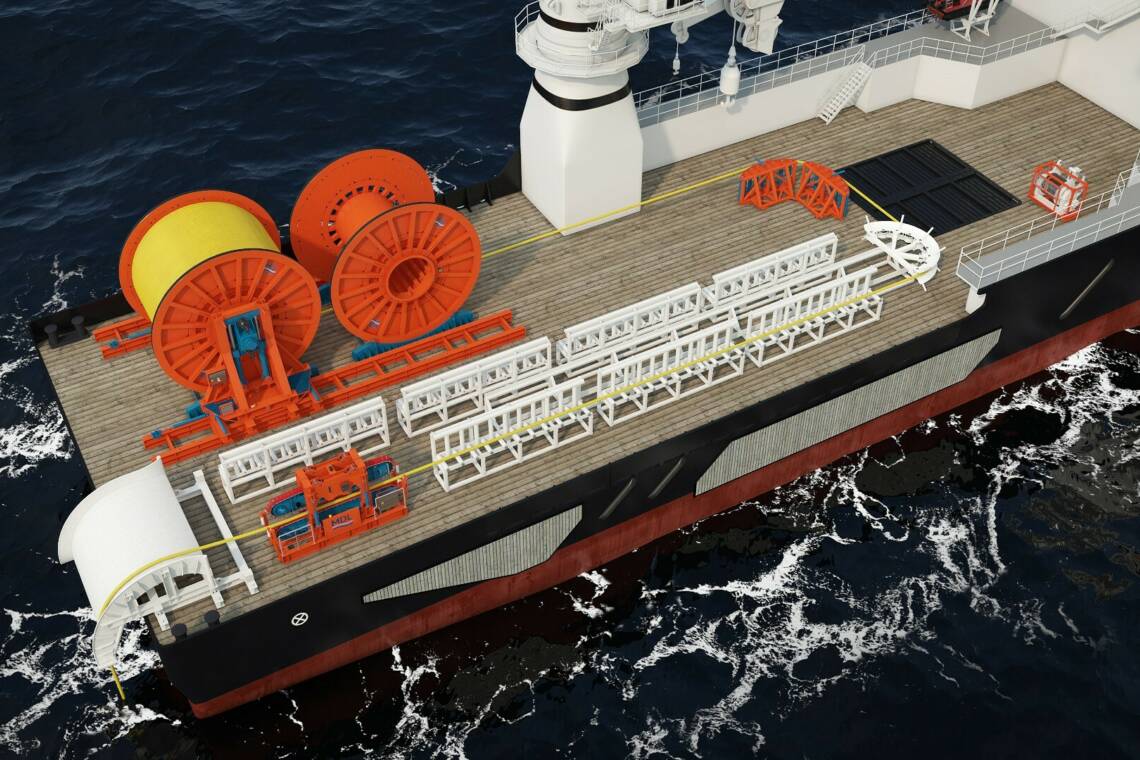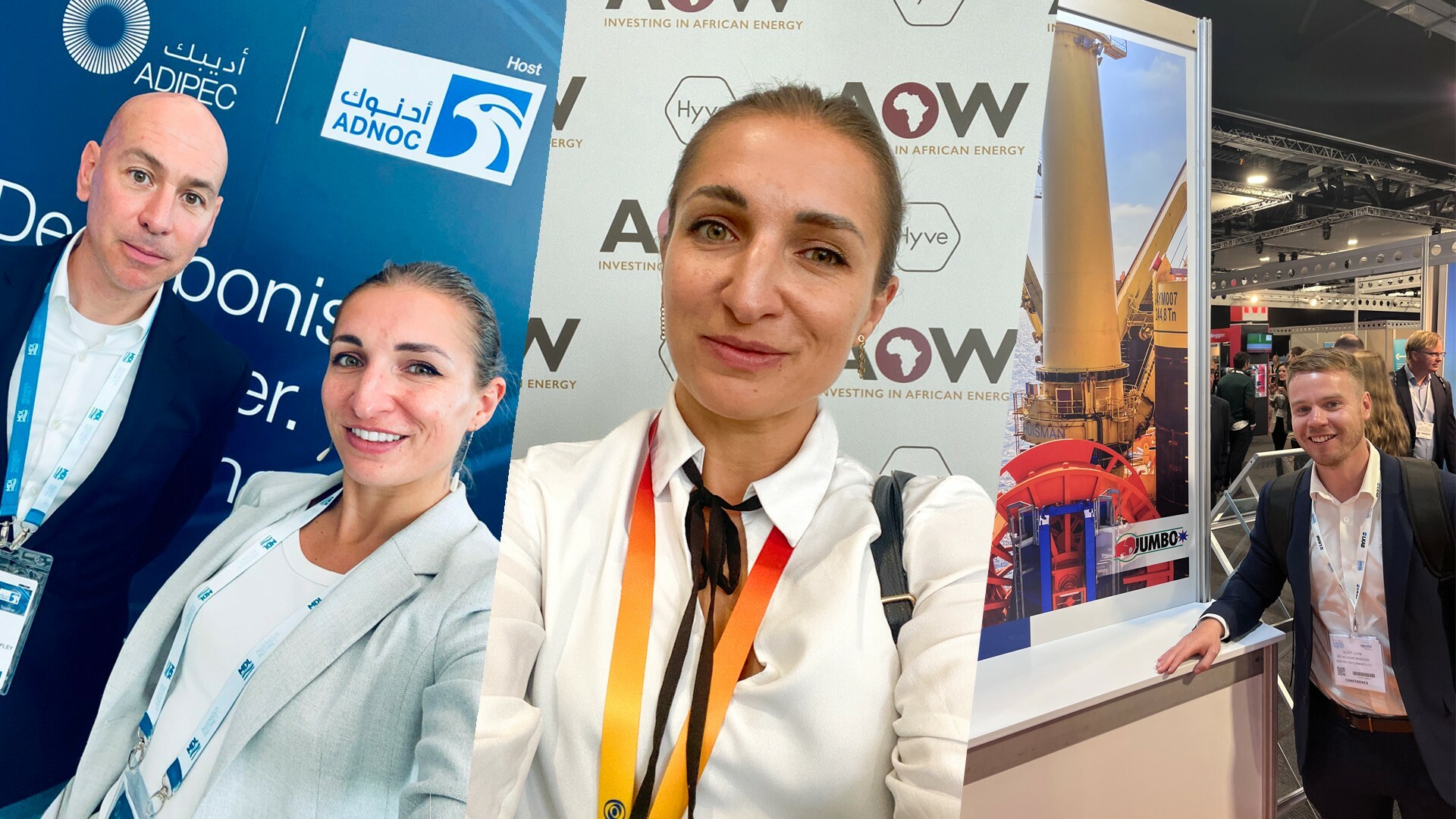Three is the number for *just* energy transition

The energy transition is key for addressing climate change - but what it looks like is a complex and multifaceted challenge.
Autumn is a busy period. Not only owing to the post-holiday motivation to deliver on the strategies agreed at the start of the year; it is also a peak time for global trade events.
I found myself in a conundrum with three trade shows of interest overlapping one another: Floating Offshore Wind, ADIPEC and Africa Oil Week (AOW).
Due to the COP28 taking place in Abu Dhabi at the end of 2023, ADIPEC - one of the key events on the energy industry’s calendar - had been moved from its usual slot in November forward into October… same week that Aberdeen hosted the Floating Offshore Wind conference.
Having already booked my travel to the UAE, followed by a direct flight to Cape Town for AOW the week after, I had to get feedback from the home show from my colleagues filling in for my absence, once I returned to the office in mid-October.

Across the three (quite distinct, you must agree) events, three common themes come out clearly:
1) Decarbonisation - i.e. the need to reduce global greenhouse gas (GHG) emissions, through means of technology and improvements across the value chain.
“Decarbonising. Faster. Together.” was the leading theme of this year’s ADIPEC, with the agenda heavily focused on carbon capture and storage as well as green and blue hydrogen as sources of power. These were also the talking points at Africa Oil Week, where the processing technology is less advanced due to limited investment to date, but the opportunity is plain to see: from recirculating flare gas to tapping into abundant natural gas reserves, which the European Commission has now endorsed as a “transition” fuel.
On the UK Floating Offshore Wind scene, the early “TOG” projects from Government’s INTOG licensing round - the acronym referring to “Targeted Oil & Gas” - are focusing on electrification of existing offshore infrastructure with renewable energy.
2) Energy security. Recent years have shown the importance of predictable supply of gas for socioeconomic stability, regardless of a country’s GDP.
In the UK this is still felt through the cost of living crisis, triggered by the high wholesale gas prices last winter. In Africa, energy poverty is common place: two-thirds of the continent do not have access to electricity today. These realities demonstrate the importance of reliable energy sources for basic domestic needs - not just exports and profits.
3) Fairness. You would have heard the term “just transition”, reflecting that the move away from hydrocarbons towards renewable energy sources needs to be fair on those affected by the change - none more so than the nations dependent on these natural resources for survival, let alone growth.
Most of the increase in energy demand over the next 30 years will come from the Global South, and these nations have little historical responsibility for the build-up of greenhouse gases.
“What has been missing in the conversation is finance; how Africa, contributing less than 5% of emissions causing the crisis we’re facing, is going to be able to finance the transition,” said Hon Herbert Krapa, Ghana’s Deputy Minister of Energy at ADIPEC.
Energy poverty is a universal and self-perpetuating problem - it leads to lower standards of living, affecting education, in turn reducing our capacity to innovate and improve our GHG emissions through better process and technology. A vicious circle.
These three major themes are reflected in another phrase associated with the transition: the energy trilemma.
According to the House of Commons’ library, the energy trilemma is “a framework of three objectives that energy policymakers need to balance” and which comprises:
- Sustainability: decarbonising energy.
- Security: ensuring the security and reliability of energy supplies.
- Affordability: minimising the cost of energy to consumers.
I found it very telling how such diverse events (on size, location and sector focus) were unified in applying these themes to their agendas. These are the messages I heard drummed up in support:
Ensure energy security through steady output
The conflicts in Ukraine and Gaza are painful reminders of how quickly localised events can impact global economies.
Reliance on limited import/export routes (gas or other) has been proven detrimental, demonstrating how reduction in supply from a single source can balloon the cost of living in developed and developing nations alike, inviting recession and the subsequent fallouts.
As noted by the International Energy Forum's Secretary General Joseph McMonigle: "Previous transitions, from wood to coal, from coal to oil, natural gas, nuclear fuel, and renewable sources took place over long periods, were driven by market forces, and in no case was the previous energy source fully replaced. Today, our climate goals demand that we eliminate CO2 emissions in just a quarter of a century, even as energy demand continues to grow."
The technology to harness renewable resources at a level which can meet the current global demand simply isn’t here - and then there’s the issue of expected 20% growth in world population by 2050. To flick the OFF switch on hydrocarbons overnight is unsustainable, while advocating for it results in reduced investment in green technology - slowing us down the path towards decarbonised future.
Fairness of approach
GHG generation is not equally distributed around the world as it correlates with a country's development status.
African governments argue that it is not their responsibility to reverse the damage done in the greatest part by countries that are much richer than theirs. Made up essentially from developing nations, the African continent produces only 4% of the global CO2 - reducing this to zero today, while helpful, would not make a huge impact on the world as a whole, while risking the collective African nation to fall further into poverty, increasing the divide.
At the same time, in addition to abundant fossil fuels, Africa has considerable potential in the renewable energy space. According to a recent report by Deloitte, the continent is estimated to hold 60% of the world’s best solar, hydro, wind, and geothermal energy sources; but in order to harness those, investment is required - and that will come from satisfying the world’s demand for energy today.
Unified approach is not universal approach
It is important that the world pulls together to reduce their carbon footprint, but there is no single template that is suitable to all, as it comes down to reasonably accessible resources, technology and skilled workforce.
For example, there was little talk of offshore wind at ADIPEC, giving more room to solar - a green technology that is unlikely to power up the UK.
The Government officials at AOW argued each country should be given the freedom to set their policies and targets suitable to their socio-economic situation. By harnessing their natural reserves for domestic need, they are able to bring their own nations up to speed with the “developed” countries, setting specific net-zero targets.
On the flip side, as the continent works to catch up with the more advanced regions, it is also expected to drive the biggest growth in energy demand.
It is therefore important that what becomes universal is embracing collaboration: through sharing technology, skillsets and learnings to maximise those natural reserves at minimum cost and impact on the environment. In this scenario, there is a prize for everyone.
Using existing resources to enable transition
This applies as much to the previous point on maximising natural reserves as it does to the application of existing technology for decarbonisation or development of renewable energy sources.
The Agogo FPSO is a great example. Scheduled for deployment offshore Angola later this decade, this floating production facility is estimated to generate at minimum 17% less GHG than its former counterparts. This is achieved through the application of new technology deployed or trialled elsewhere - such as CCUS and hydro converters, automation and digitalisation of systems, while using an existing hull - recycled in the name of circular economy.
A similar mindset needs to be applied to FOW if we are to progress it at pace. In the past, there was resistance to using technology proven in the “dirty” O&G for renewable energy development - a moral dilemma you could say. But recently attitudes have been changing, taking a more logical approach: the offshore challenges are similar across the sectors, the processes are tested and the supply chain is experienced in tackling these - in many cases providing a ready answer to the new questions popping up in the FOW world.

MDL experienced that ourselves two decades ago, when our skillsets and knowledge acquired in servicing the fishing industry turned out to be directly applicable for SURF operations in the O&G sector - helping to make them safer and more efficient, due to our on-the-job learnings on the importance of reliability.
Today, we are actively engaging with the offshore wind community to understand their challenges and how our extensive cross-sector experience can help tackle them. Same goes for our client base, well established in the O&G space but now looking to diversify their operations to enable the transition.
Through the application of our portable flex-lay equipment on locally-available vessels, supported by our Project Management & Engineering expertise in lifting and pulling operations on and offshore, we can progress the INTOG and pilot FOW projects today, to clarify the picture of what large-scale developments will require - and what alternatives can be applied to overcome the bottlenecks.
While the two weeks away (and one week back catching up) delivered a whirlwind of information, the correlations between the agendas made it easy to get a feel for the underlying message that reflects the state-of-play of today’s global energy landscape.
That message is: cross-sector collaboration is essential to achieving the carbon emission reduction goal.
The “energy transition” needs to be a fair-paced walk, allowing for toddlers, sprinters and the elderly to keep up; not a jump into the deep unexplored waters of renewable energy; otherwise we all face a sink or swim scenario.
Aleks Jurczak - Head of Strategic Marketing
- April 2024MDL supports Saipem on Greece INGS
- January 2024Preparation is key to a long life subsea
- January 2024Forward thinking with Holland
- January 2024Ensuring peak performance for FPSO and platform owners in 2024
- December 2023Reducing the risk of cable failures




